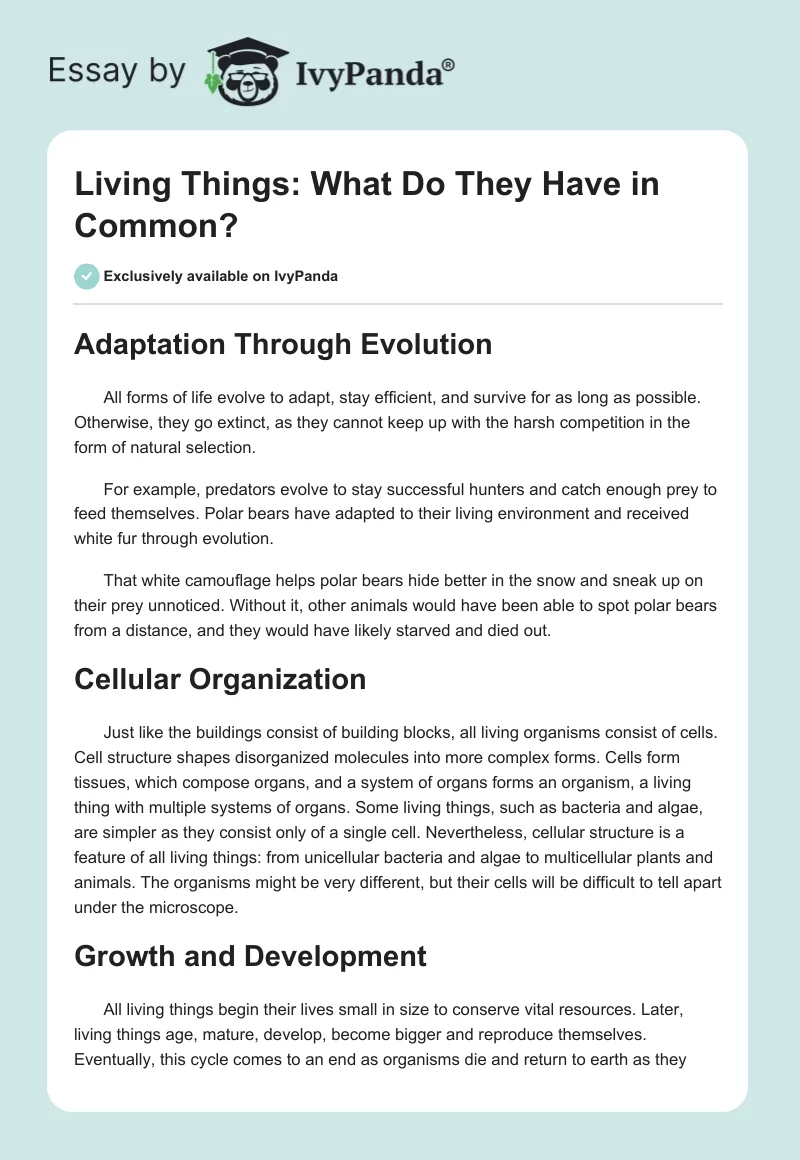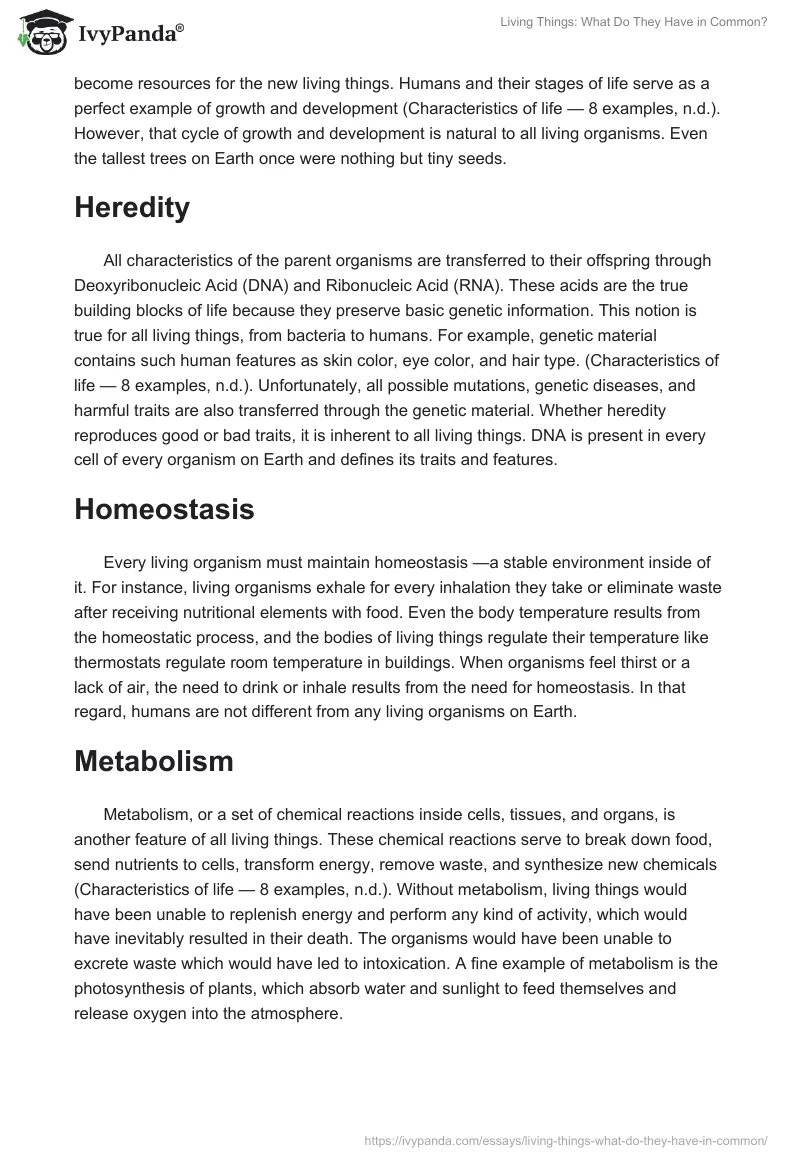Adaptation Through Evolution
All forms of life evolve to adapt, stay efficient, and survive for as long as possible. Otherwise, they go extinct, as they cannot keep up with the harsh competition in the form of natural selection.
For example, predators evolve to stay successful hunters and catch enough prey to feed themselves. Polar bears have adapted to their living environment and received white fur through evolution.
That white camouflage helps polar bears hide better in the snow and sneak up on their prey unnoticed. Without it, other animals would have been able to spot polar bears from a distance, and they would have likely starved and died out.
Cellular Organization
Just like the buildings consist of building blocks, all living organisms consist of cells. Cell structure shapes disorganized molecules into more complex forms. Cells form tissues, which compose organs, and a system of organs forms an organism, a living thing with multiple systems of organs. Some living things, such as bacteria and algae, are simpler as they consist only of a single cell. Nevertheless, cellular structure is a feature of all living things: from unicellular bacteria and algae to multicellular plants and animals. The organisms might be very different, but their cells will be difficult to tell apart under the microscope.
Growth and Development
All living things begin their lives small in size to conserve vital resources. Later, living things age, mature, develop, become bigger and reproduce themselves. Eventually, this cycle comes to an end as organisms die and return to earth as they become resources for the new living things. Humans and their stages of life serve as a perfect example of growth and development (Characteristics of life — 8 examples, n.d.). However, that cycle of growth and development is natural to all living organisms. Even the tallest trees on Earth once were nothing but tiny seeds.
Heredity
All characteristics of the parent organisms are transferred to their offspring through Deoxyribonucleic Acid (DNA) and Ribonucleic Acid (RNA). These acids are the true building blocks of life because they preserve basic genetic information. This notion is true for all living things, from bacteria to humans. For example, genetic material contains such human features as skin color, eye color, and hair type. (Characteristics of life — 8 examples, n.d.). Unfortunately, all possible mutations, genetic diseases, and harmful traits are also transferred through the genetic material. Whether heredity reproduces good or bad traits, it is inherent to all living things. DNA is present in every cell of every organism on Earth and defines its traits and features.
Homeostasis
Every living organism must maintain homeostasis —a stable environment inside of it. For instance, living organisms exhale for every inhalation they take or eliminate waste after receiving nutritional elements with food. Even the body temperature results from the homeostatic process, and the bodies of living things regulate their temperature like thermostats regulate room temperature in buildings. When organisms feel thirst or a lack of air, the need to drink or inhale results from the need for homeostasis. In that regard, humans are not different from any living organisms on Earth.
Metabolism
Metabolism, or a set of chemical reactions inside cells, tissues, and organs, is another feature of all living things. These chemical reactions serve to break down food, send nutrients to cells, transform energy, remove waste, and synthesize new chemicals (Characteristics of life — 8 examples, n.d.). Without metabolism, living things would have been unable to replenish energy and perform any kind of activity, which would have inevitably resulted in their death. The organisms would have been unable to excrete waste which would have led to intoxication. A fine example of metabolism is the photosynthesis of plants, which absorb water and sunlight to feed themselves and release oxygen into the atmosphere.
Reproduction
All living things have a drive for reproduction that keeps them alive as a species in the long perspective. This notion is true for the whole variety of organisms present on Earth. Fleeting mayflies reproduce in colossal numbers and usually die on the day of their birth. Such creatures as hyenas live about 20 years in the wild and give birth to 2-4 cubs in their life. The giant sequoia trees can live thousands of years without external intervention, so many generations of humans can change before sequoia reproduces. All living organisms on Earth engage in reproduction, whether they require a partner or not.
Response to Stimuli
All living things are sensitive to their environment and react to outside stimuli. For example, plants such as sunflowers respond to sunlight and turn to it to catch sunrays necessary for their growth and development. This evident turn to light so common among the plants is called “phototropism” (Characteristics of life — 8 examples, n.d.). However, the same environmental stimuli affect humans differently and force them to protect against them. Instead of turning to sunlight, a girl in the picture squints to cover her eyes. Another example of the response to outside stimuli would be a reaction to touching a hot surface. Regardless of reaction type, the response to stimuli remains one of the most prominent features of living things.


